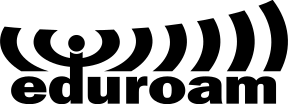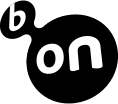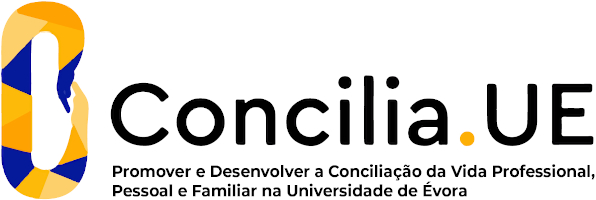2024
Human Biomonitoring
Name: Human Biomonitoring
Code: BIO13895L
3 ECTS
Duration: 15 weeks/78 hours
Scientific Area:
Biological Sciences
Teaching languages: Portuguese
Languages of tutoring support: Portuguese, English
Regime de Frequência: Presencial
Presentation
This is an optional unit directed at the 3rd year of Human Biology. It aims to endow students with nuclear knowledge for a Biological Sciences Professional, by creating, given the current state of events, a strong collective and individual identification with the subject matter.
Sustainable Development Goals
Learning Goals
At the end of this course, students will be able to:
Define the major sources of biological, chemical and physical agents found in water, air, soil, and food.
Identify major current and historic environmental health hazards, and describe the various approaches to identifying and studying these hazards.
Understand chemical and pathogen routes of exposure, toxic mechanisms of action, and the link to human health impacts.
Understand the collection methods, validation and application of human biomonitoring data.
Describe the role of Risk Assessment, Risk Management and Risk Communication paradigms in the prevention, detection, management, control, and removal of hazardous agents present in human environments.
Understand the existing national and international regulatory framework and policy for controlling environmental agents.
Define the major sources of biological, chemical and physical agents found in water, air, soil, and food.
Identify major current and historic environmental health hazards, and describe the various approaches to identifying and studying these hazards.
Understand chemical and pathogen routes of exposure, toxic mechanisms of action, and the link to human health impacts.
Understand the collection methods, validation and application of human biomonitoring data.
Describe the role of Risk Assessment, Risk Management and Risk Communication paradigms in the prevention, detection, management, control, and removal of hazardous agents present in human environments.
Understand the existing national and international regulatory framework and policy for controlling environmental agents.
Contents
Introduction to Environmental Health and Human Biomonitoring.
Overview of biological, chemical and physical environmental factors
Exposure Assessment.
Linking Exposure to Health.
Effects-Dose-Response.
Toxicology and Environmental disease.
Air Pollution.
Case study: Exposure to Diesel Exhaust.
Built Environment.
Case study: Indoor pollution (fungi, chemicals) and Health Risk.
Water Pollution.
Case Study: Pharmaceuticals, Endocrine Disrupting Chemicals (EDCs) and Nanomaterials in the aquatic medium.
Hazardous Waste.
Case Study: e-waste.
Climate Change and Global Health.
Case study: Zoonotic Diseases- the transference of microbiological agents between animals and man.
Food Safety.
Case Study: Somethings Fishy- Mercury in my Seafood.
Biomarkers: utility, classification and application.
Risk Assessment and Management.
One Health and the Ecological Model in Human Health.
Overview of biological, chemical and physical environmental factors
Exposure Assessment.
Linking Exposure to Health.
Effects-Dose-Response.
Toxicology and Environmental disease.
Air Pollution.
Case study: Exposure to Diesel Exhaust.
Built Environment.
Case study: Indoor pollution (fungi, chemicals) and Health Risk.
Water Pollution.
Case Study: Pharmaceuticals, Endocrine Disrupting Chemicals (EDCs) and Nanomaterials in the aquatic medium.
Hazardous Waste.
Case Study: e-waste.
Climate Change and Global Health.
Case study: Zoonotic Diseases- the transference of microbiological agents between animals and man.
Food Safety.
Case Study: Somethings Fishy- Mercury in my Seafood.
Biomarkers: utility, classification and application.
Risk Assessment and Management.
One Health and the Ecological Model in Human Health.
Teaching Methods
Theoretical classes will be conducted through oral exposition, grounded in active interaction with students and supported by audiovisual resources (PowerPoint presentations, videos, computer models). The use of scientific articles will further complement these sessions, providing case studies that illustrate key concepts and applications within the field.
The theoretical?practical classes will promote the critical discussion of scientific articles reflecting the current state of the art, as well as other pedagogical materials, including films. These materials will be prepared collectively by the in advance and presented by a designated group of students, whose task will be to stimulate analytical debate among peers under the guidance and moderation of the instructor.
The theoretical?practical classes will promote the critical discussion of scientific articles reflecting the current state of the art, as well as other pedagogical materials, including films. These materials will be prepared collectively by the in advance and presented by a designated group of students, whose task will be to stimulate analytical debate among peers under the guidance and moderation of the instructor.
Assessment
Assessment is continuous and comprises several components:
Group work: written report (30%) and oral presentation with discussion (20%);
Photography contest on Biomonitoring (individual): 10%;
Biomonitoring Project Protocol (individual): 40%.
Students who do not achieve a passing grade through continuous assessment may undertake a final examination, individually administered, covering all programmatic contents of the curricular unit.
Group work: written report (30%) and oral presentation with discussion (20%);
Photography contest on Biomonitoring (individual): 10%;
Biomonitoring Project Protocol (individual): 40%.
Students who do not achieve a passing grade through continuous assessment may undertake a final examination, individually administered, covering all programmatic contents of the curricular unit.
Teaching Staff
- Ana Catarina Almeida Sousa [responsible]





















